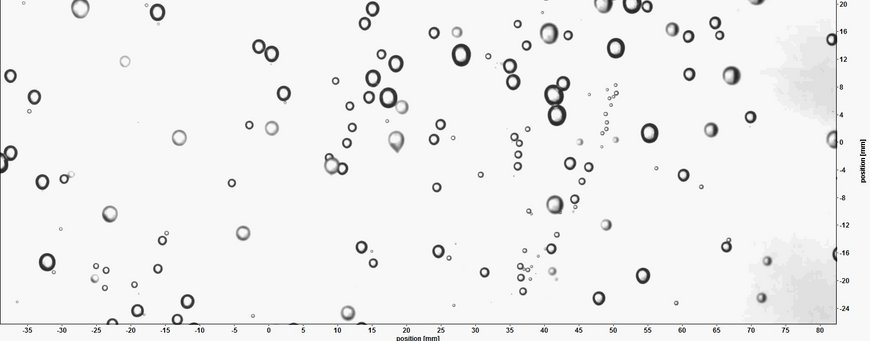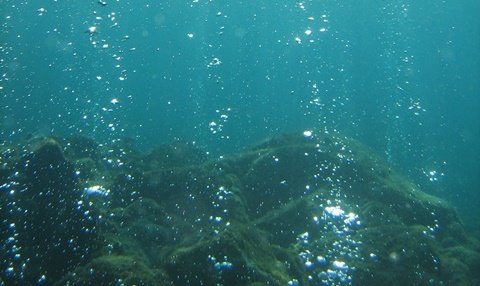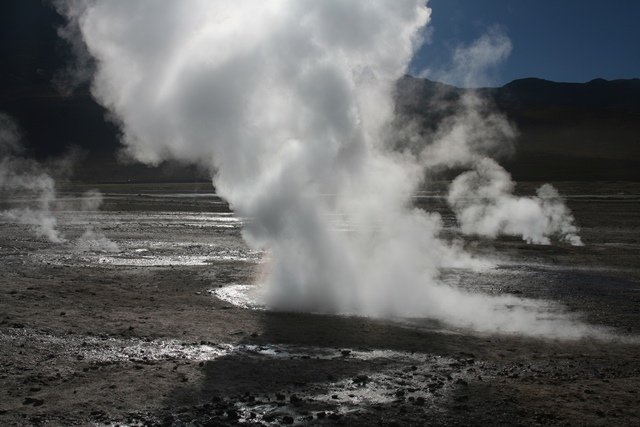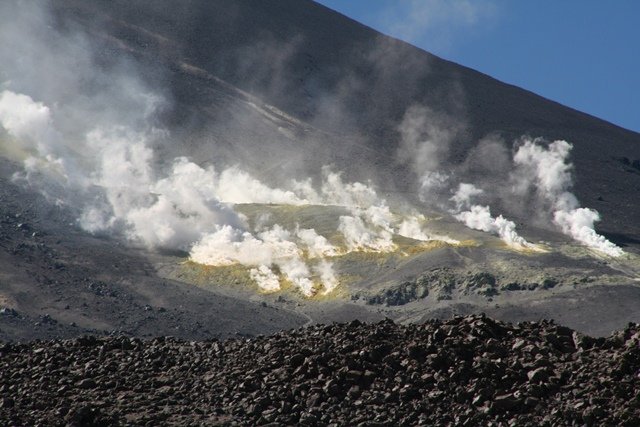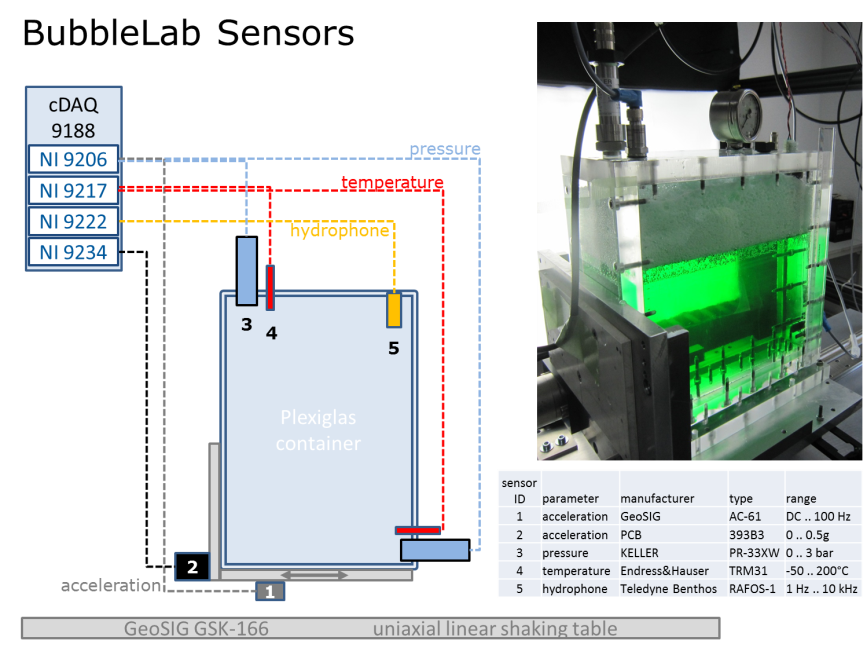Willkommen im Bubble Labor!
Earthquake and volcano processes are commonly accompanied by migration of fluids and deformation of fluid systems and their interaction with the host rock, including fracturing, fluid-filled crack growth and diking. The coupling between fluids and rock works in both ways: On one side, changes in the state of fluid-rock systems are thought to encourage or discourage tectonic earthquakes, induce seismicity changes and alter volcano activity; on the other side, the migration of fluids, gas release, phase changes and the assemblage of reservoirs are controlled by man-made, tectonic and volcanic stress changes. Goal of the Bubble Lab is to explore the development and (in)stability of large volume (mass) reservoirs at crustal or mantle depths. In combination with field observations and monitoring, by studying how fluid-rock systems act and change in time and space, we aim to better understand earthquake-triggered hazards, hydrogeological effects and volcano eruptions.
MED-SUV
Within MED-SUV (EU grant agreement No 308665) pressure tansients in the hydrothermal system of Campi Flegrei are being studied using a combination of laboratory experiments (BubbleLab) and continuous pressure/temperature monitoring at fumaroles, mudpools, hot springs, and geothermal wells.
CCMP-POMPEI
With funding from the now concluded ERC Starting Grant project CCMP-POMPEI (EU grant agreement No 240583) and in collaboration with Atsuko Namiki, Hiroshima University, we have studied the effect of sloshing a layered bubbly magma chamber, see. We have also investigated the propagation of gas- and water-filled cracks in gelatin to simulate sill formation and sill reactivation in calderas.
Selected publications of relevant experimental studies on hydrothermal and volcanic processes:
Namiki, A., Rivalta, E., Woith, H. & Walter, T.R. (2016):
Sloshing of a bubbly magma reservoir as a mechanism of triggered eruptions.
Journal of Volcanology and Geothermal Research, doi: http://dx.doi.org/10.1016/j.jvolgeores.2016.03.010.
Rivalta, E., Taisne, B., Bunger, A.P., Katz, R.F. (2014).
A review of mechanical models of dike propagation: Schools of thought, results and future directions.
Tectonophysics, 638, 1-42
Woith, H.; Barbosa, S.; Gajewski, C.; Steinitz, G.; Piatibratova, O.; Malik, U.; Zschau, J. (2011):
Periodic and transient radon variations at the Tiberias hot spring, Israel during 2000-2005.
Geochemical Journal, 45, 6, 473-482.
Schöpa, A.; Pantaleo, M.; Walter, T. R. (2011):
Scale-dependent location of hydrothermal vents: Stress field models and infrared field observations.
Journal of Volcanology and Geothermal Research, 203, 3-4, 133-145.
Burchardt, S.; Walter, T. R. (2010):
Propagation, linkage, and interaction of caldera ring-faults: comparison between analogue experiments and caldera collapse at Miyakejima, Japan, in 2000.
Bulletin of Volcanology, 72, 3, 297-308.
Rivalta E., 2010.
Evidence that coupling to magma chambers controls the volume history and velocity of laterally propagating intrusions.
J. Geophys. Res., 115, B07203, doi:10.1029/2009JB006922.
Maccaferri F., Bonafede M. and Rivalta E., 2010.
A numerical model of dyke propagation in layered elastic media
Geophys. J. Int., Vol. 180 N. 3, Pag. 1107 - 1123, doi:10.1111/j.1365-246X.2009.04495.x.
Le Corvec, N.; Walter, T. R. (2009):
Volcano spreading and fault interaction influenced by rift-zone intrusions: Insights from analogue experiments analyzed with digital image correlation.
Journal of Volcanology and Geothermal Research, 183, 3-4, 170-182.
Rivalta, E., and Dahm, T., 2006.
Acceleration of buoyancy-driven fractures and magmatic dikes beneath the free surface Geophys. J. Int., vol. 166, Issue 3, Pag. 1424-1439
Möller, P.; Woith, H.; Dulski, P.; Lüders, V.; Erzinger, J.; Kämpf, H.; Pekdeger, A.; Hansen, B. T.; Lodemann, M.; Banks, D. A. (2005):
Main and trace elements in KTB-VB fluid: composition and hints to its origin.
Geofluids, 5, 1, 28-41.
Wang, R.; Woith, H.; Milkereit, C.; Zschau, J. (2004):
Modelling of hydrogeochemical anomalies induced by distant earthquakes.
Geophysical Journal International, 157, 2, 717-726.
Woith, H., Wang, R.J., Milkereit, C., Zschau, J., Maiwald, U. & Pekdeger, A. (2003):
Heterogeneous response of hydrogeological systems to the Izmit and Duzce (Turkey) earthquakes of 1999
Hydrogeology Journal, 11, 113-121


